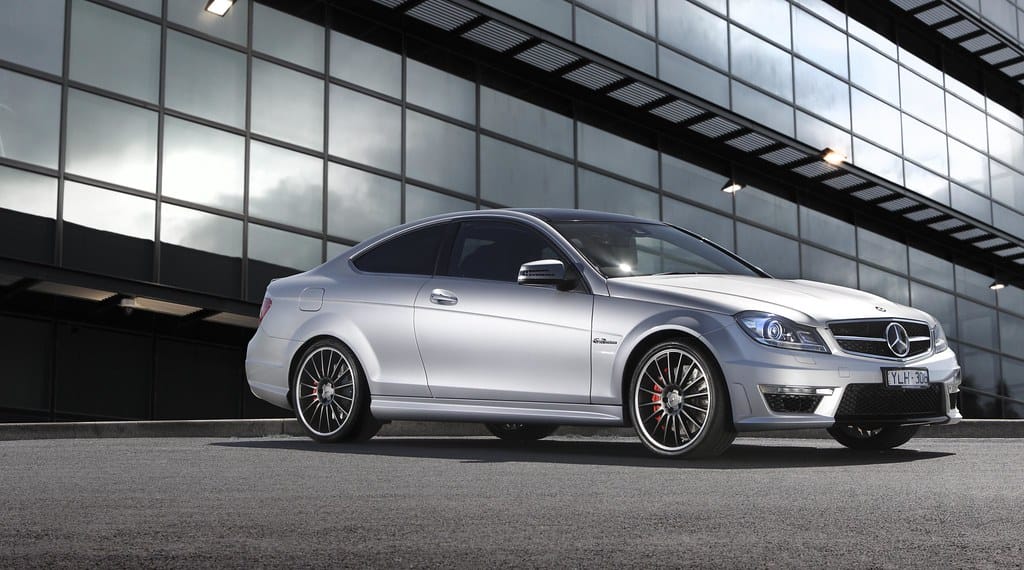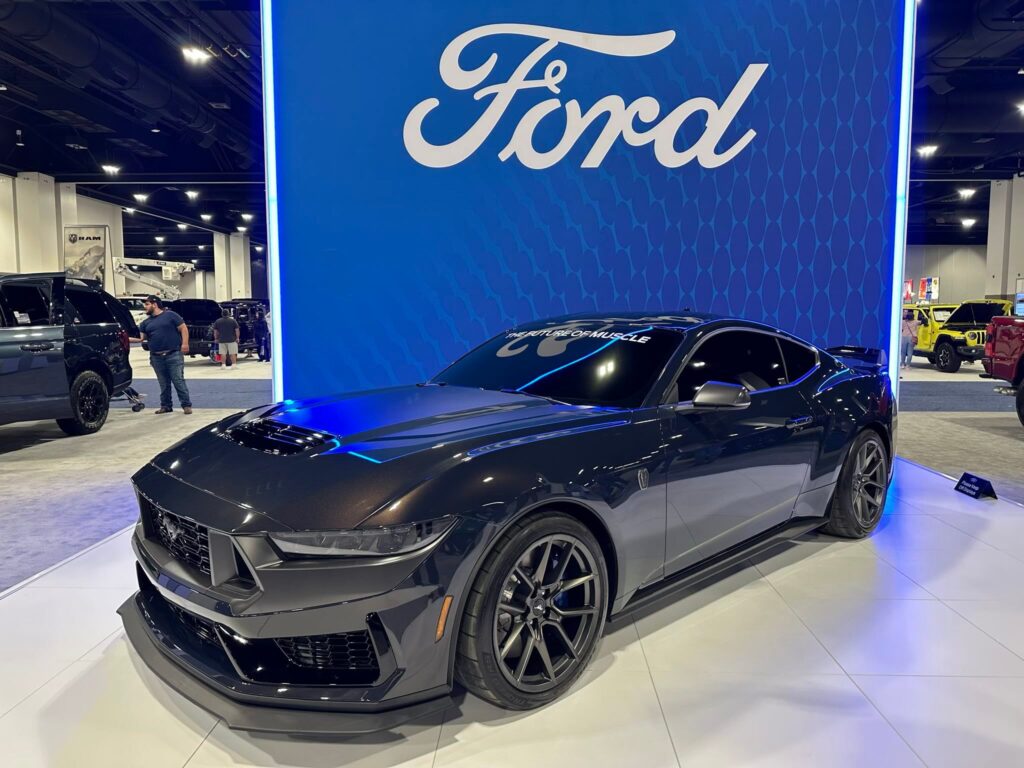
The 1960s truly marked the golden age of American muscle, a thrilling era where raw horsepower wasn’t just admired, it was cheaply available and unequivocally king. In those exhilarating years, the single most important metric for any self-respecting performance car wasn’t fuel economy or luxury appointments; it was the quarter-mile time, a brutal test of acceleration that separated the contenders from the pretenders on any given drag strip across the nation.
While modern cars undeniably benefit from decades of engineering refinement and the pervasive influence of advanced computer systems, some of the most formidable machines forged in the heat of the 1960s horsepower wars possessed such a pure, unadulterated grunt that they could still line up today and give many contemporary sports cars a very serious challenge down the quarter-mile. This era saw American car manufacturers locked in fierce competition, driven by the prestige and financial rewards that came with dominating the drag strip.
This relentless quest for supremacy spurred manufacturers to pour their resources into innovative engineering and bold designs, resulting in automotive legends capable of blazing down a straight stretch of road with astonishing speed and undeniable authority. These machines didn’t just define an era; they left an indelible legacy, shaping automotive history and creating an enduring culture of performance. Join us as we explore some of the absolute kings of horsepower from this iconic decade, vehicles that, even by today’s standards, stand a pretty good chance of shocking the competition.
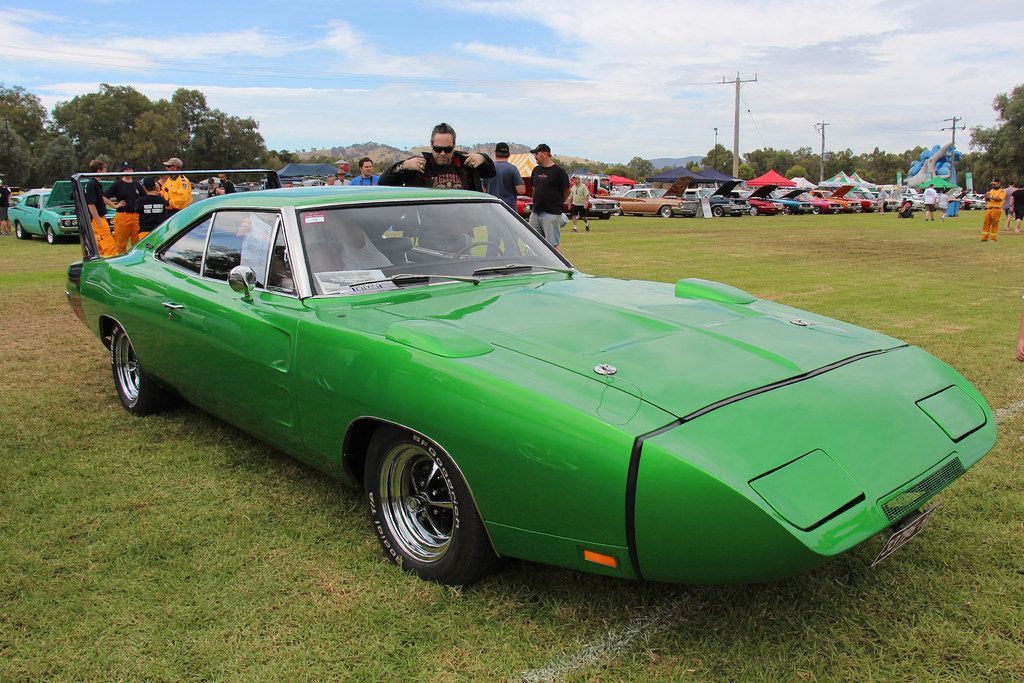
1. **1969 Dodge Charger Daytona**The 1969 Dodge Charger Daytona is an undeniable icon, immediately recognizable by its wild aerodynamic nose cone and truly massive rear wing. This audacious design was not merely for show; it was a testament to its primary purpose: to absolutely dominate NASCAR circuits. However, the Daytona’s slippery body and potent powertrain inadvertently forged it into an equally formidable drag strip monster, capable of punching through the air with an efficiency largely unmatched by its contemporaries.
Underneath that distinctive hood, the Charger Daytona housed the legendary 426 Hemi engine, an engineering marvel that officially produced 425 horsepower. This powerplant, combined with the car’s advanced aerodynamics, meant that the Daytona was built for speed, whether on the high banks of a superspeedway or the asphalt of a quarter-mile strip. Its ability to maintain momentum and slice through air resistance gave it a distinct advantage.
Original examples of the Charger Daytona were capable of hitting 60 mph in under 5 seconds, a feat that, even in today’s performance-obsessed landscape, remains incredibly respectable. This exceptional acceleration, coupled with its unique aesthetic, cemented its reputation as a benchmark for performance. Its NASCAR-bred pedigree translated seamlessly to drag racing, allowing it to deliver jaw-dropping quarter-mile times.
The Daytona wasn’t just a car; it was a statement. Its extreme design, born from the crucible of top-tier racing, translated into road-going machines that captivated enthusiasts and intimidated rivals. Its performance was not a compromise but a pure expression of an era focused solely on speed and dominance.
Today, the 1969 Dodge Charger Daytona remains a highly coveted collector’s item, celebrated not just for its rarity and iconic looks, but for the sheer, brutal performance it delivered straight from the factory floor. It stands as a testament to Dodge’s commitment to pushing boundaries and building machines that were genuinely ahead of their time, both visually and dynamically.
Car Model Information: 2021 Volvo XC60 T6 Momentum
Name: Dodge Charger Daytona
Caption: 1969 Dodge Charger Daytona
Manufacturer: Dodge
Production: 1969–1970,2006–2009,2013,2017–2023
Class: Muscle car
Layout: FR layout
Categories: 1960s cars, 1970s cars, 2000s cars, All articles needing additional references, All articles with unsourced statements
Summary: Dodge produced three separate models with the name Dodge Charger Daytona, all of which were modified Dodge Chargers. The name was taken from Daytona Beach, Florida, which was an early center for auto racing and still hosts the Daytona 500, NASCAR’s premier event. The original Dodge Charger Daytona was designed to beat the competition in NASCAR racing. It was the first NASCAR vehicle to reach 200 miles per hour, which was a major milestone at the time.
Get more information about: Dodge Charger Daytona
Buying a high-performing used car >>>
Brand: Dodge Model: Charger Daytona
Price: $21,646 Mileage: 95,153 mi.
Read more about: Death Traps on Wheels: 10 Iconic American Cars Too Dangerous for Today’s Roads
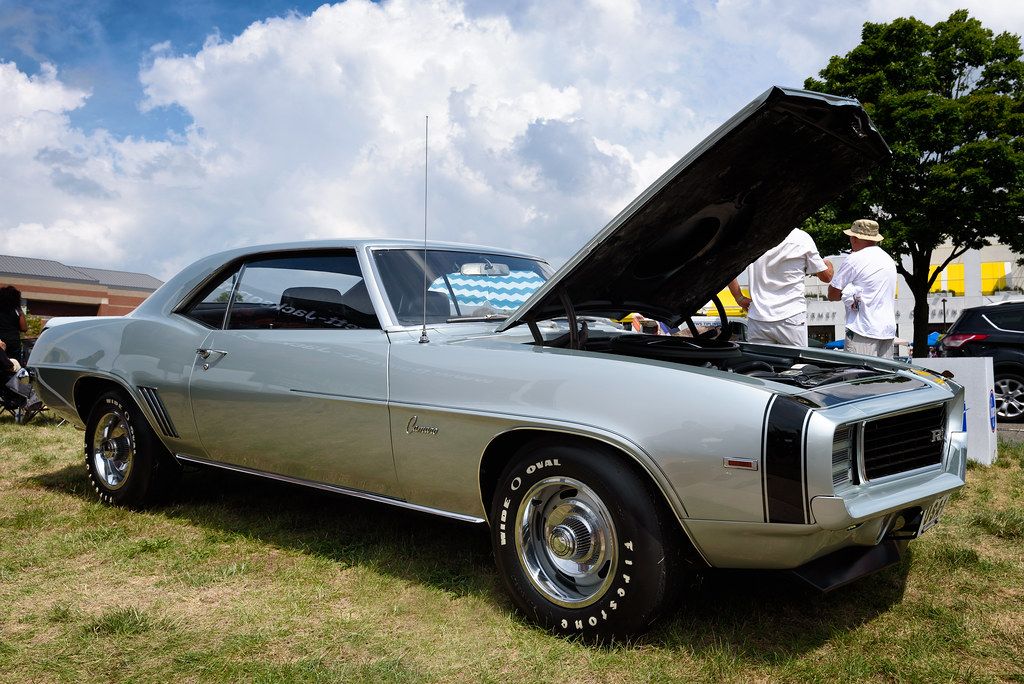
2. **1969 Chevrolet Camaro ZL1**The 1969 Chevrolet Camaro ZL1 stands as one of the rarest and most legendary muscle cars ever produced, with only 69 of these all-aluminum big-block beasts ever seeing the light of day. This extreme scarcity was a direct result of its purpose: to offer a factory-backed, race-ready machine that blurred the lines between street legal and pure competition. The ZL1 wasn’t just a powerful Camaro; it was an exercise in extreme engineering for the drag strip.
At the heart of this formidable machine lay a 427 cubic inch engine, crafted entirely from aluminum to significantly reduce weight. While officially rated at 430 horsepower to appease regulatory bodies, it was an open secret among enthusiasts and engineers alike that this engine made closer to an astonishing 500 horsepower. This conservative rating belied its true, unleashed potential, making it a true sleeper for the uninitiated.
With the right tires and a skilled hand behind the wheel, a ZL1 could shatter expectations, running the quarter-mile in the incredibly low 13-second range right off the showroom floor. This was a testament to the raw power and meticulous engineering packed into every one of the 69 units. The ZL1 was not a car for the faint of heart; it was built for drivers who understood and could harness its immense capabilities.
The ZL1’s impact extended beyond its impressive quarter-mile times. Its very existence, as a factory option, pushed the boundaries of what was considered possible in a production car. It represented Chevrolet’s no-holds-barred approach to winning the horsepower wars, showcasing what could be achieved when performance was the singular focus, regardless of cost or practicality.
Today, the 1969 Camaro ZL1 is a revered piece of automotive history, its legendary status cemented by its rarity, colossal power, and unparalleled drag strip performance. It continues to symbolize the pinnacle of Chevrolet’s muscle car efforts in the 1960s, a true king of the quarter-mile that captured the imagination of an entire generation of car enthusiasts.
Car Model Information: 2018 Chevrolet Camaro 1LS
Name: Chevrolet Camaro
Manufacturer: Chevrolet
Production: 1966–2002,2009–2023
ModelYears: 1967–2002,2010–2024
Class: Pony car
BodyStyle: coupe,convertible
Platform: GM F platform,GM Zeta platform,GM Alpha platform
Layout: Front-engine, rear-wheel-drive layout
Categories: 1970s cars, 1980s cars, 1990s cars, 2+2 coupés, 2000s cars
Summary: The Chevrolet Camaro is a mid-size American automobile manufactured by Chevrolet, classified as a pony car. It first went on sale on September 29, 1966, for the 1967 model year and was designed to compete with the Ford Mustang. The Camaro shared its platform and major components with the Firebird, produced by General Motors’ Pontiac division that was also introduced for the 1967 model year.
Four distinct generations of the Camaro were developed before production ended in 2002. The nameplate was revived on a concept car that evolved into the fifth-generation Camaro; production started on March 16, 2009.
Production of the sixth generation of the Camaro ended in December 2023, for the 2024 model year.
Get more information about: Chevrolet Camaro
Buying a high-performing used car >>>
Brand: Chevrolet Model: Camaro
Price: $18,785 Mileage: 69,196 mi.
Read more about: Unveiling American Automotive Excellence: A Deep Dive into Chevrolet’s 12 Most Legendary Models of All Time
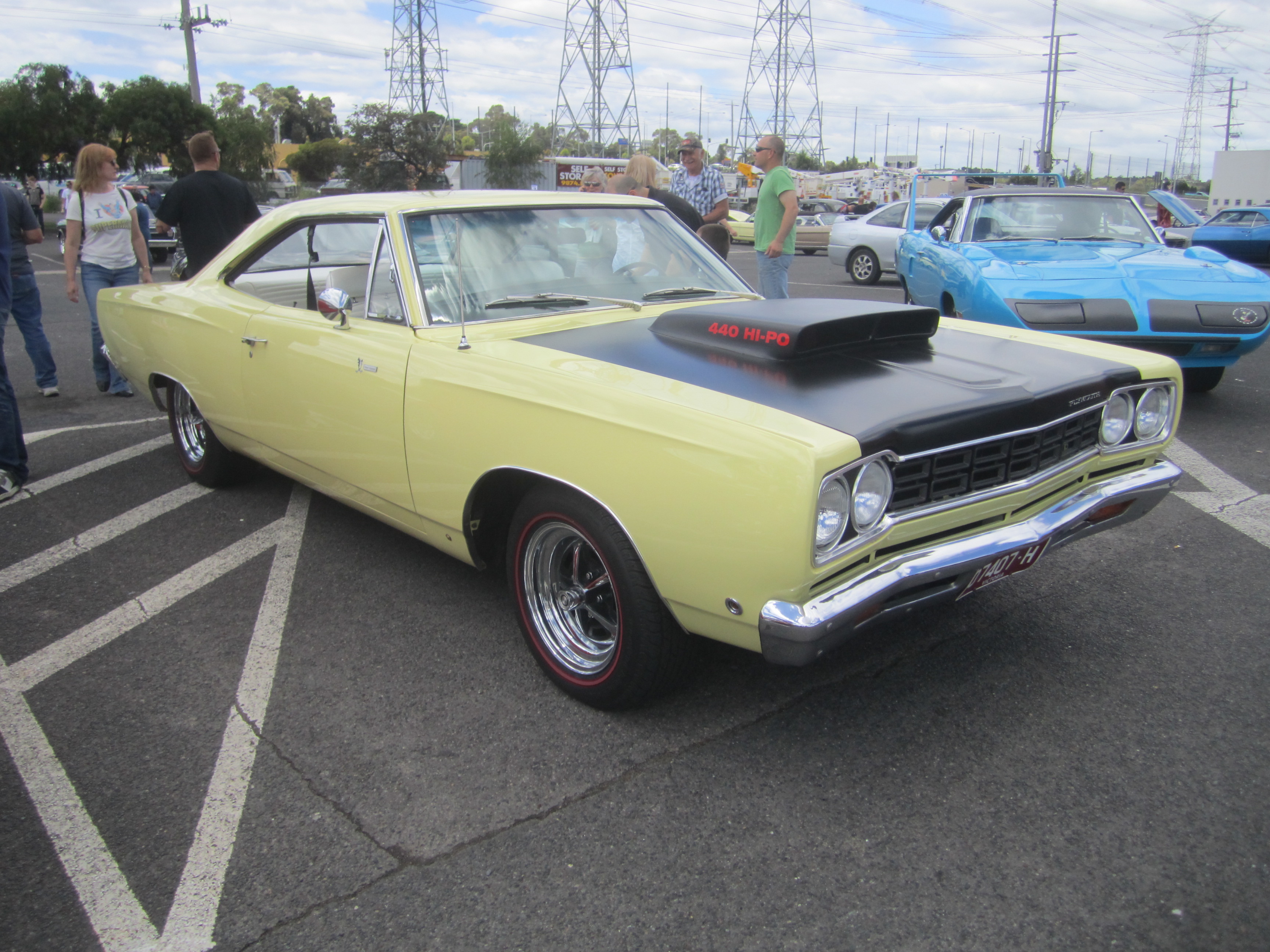
3. **1968 Plymouth Road Runner Hemi**Plymouth’s Road Runner burst onto the scene as a budget-friendly muscle car, but it instantly ascended to iconic status the moment the legendary Hemi option box was checked. This was a car designed to be accessible, yet fiercely powerful, delivering brutal acceleration without the exorbitant price tag typically associated with top-tier performance. It combined raw speed with working-class pricing, a potent formula for success on both the street and the strip.
The integration of the formidable 426 Hemi engine utterly transformed the stripped-down Road Runner, elevating it into a legitimate 12-second quarter-mile contender. This engine, known for its hemispherical combustion chambers, was a marvel of power delivery, pumping out immense torque and horsepower that propelled the lightweight Road Runner with startling ferocity. It was a no-frills approach to going fast, proving that substance trumped superfluous features.
What made the Hemi Road Runner truly fearsome was this unique combination: brutal acceleration packaged in a car that cost less than a fully loaded Corvette of the same era. This affordability meant that serious performance was within reach for a wider audience, democratizing speed and making the Road Runner a ubiquitous and highly respected presence at any drag event or street race.
The Road Runner, especially in its Hemi guise, was not just about speed; it was about attitude. It was a blue-collar hero that could humble more expensive and ostensibly more sophisticated machines. Its straightforward design and relentless focus on performance resonated deeply with enthusiasts who valued raw power and proven quarter-mile times above all else.
Even now, the 1968 Plymouth Road Runner Hemi is celebrated as a pure expression of muscle car philosophy. Its legacy endures as a testament to Plymouth’s ability to deliver incredible performance in a no-nonsense package, making it one of the most revered and feared cars of its time on any drag strip.
Car Model Information: 2020 Chevrolet Silverado 1500 LT
Name: Plymouth Road Runner
Assembly: Detroit,Michigan
Manufacturer: Plymouth (automobile)
Class: Mid-size car
Production: 1968–1980
Related: unbulleted list
Layout: FR layout
Categories: 1970s cars, 1980s cars, All articles needing additional references, All articles with peacock terms, All articles with unsourced statements
Summary: The Plymouth Road Runner is a muscle car introduced by Chrysler in the United States for the 1968 model year and marketed under its Plymouth brand. Initially based on the Belvedere, the brand’s basic mid-size model, the Road Runner combined a powerful engine with a spartan trim level and a price that undercut increasingly upscale and expensive muscle cars such as the Pontiac GTO and Plymouth’s own GTX. It was initially a sales success.
The Road Runner was built in three generations on the mid-size B platform. Like most muscle cars, its performance and sales declined in the 1970s due to an increasing focus on fuel economy and the adoption of more stringent U.S. emission standards. The nameplate became to a trim package for the compact Plymouth Volaré for model year 1976—no longer offering any special performance capability—and was discontinued in 1980.
Get more information about: Plymouth Road Runner
Buying a high-performing used car >>>
Brand: Plymouth Model: Road Runner
Price: $31,788 Mileage: 36,094 mi.
Read more about: Legends Lost: Revisiting the Classic American Cars of the ’50s and ’60s That Defined an Era and Vanished
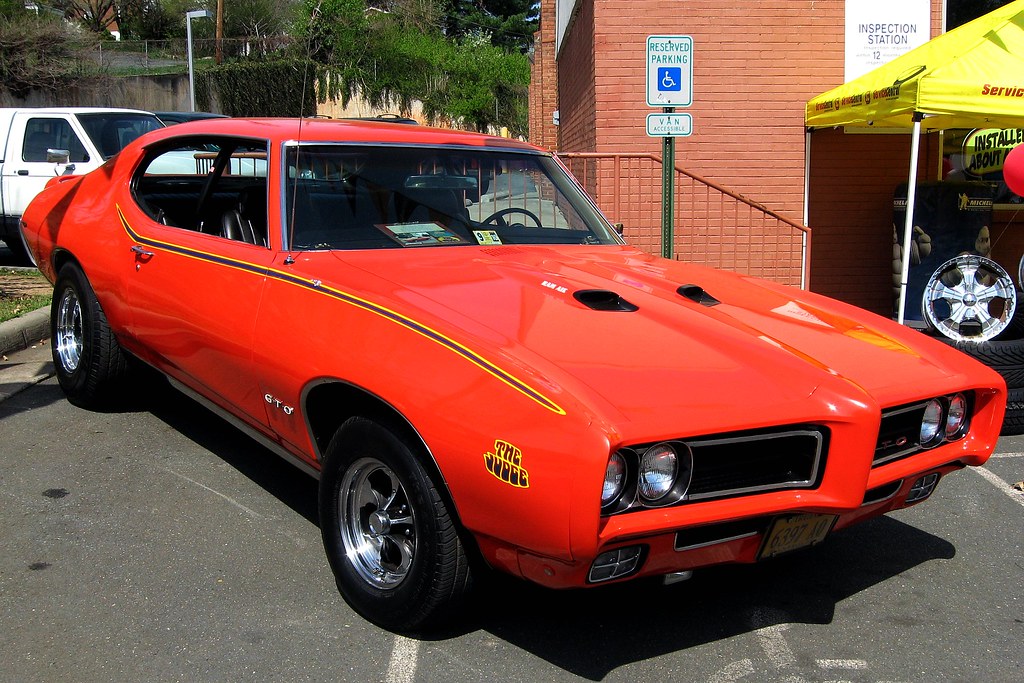
4. **1969 Pontiac GTO Judge**The 1969 Pontiac GTO Judge was an undeniable head-turner, garnering immense attention with its flamboyant wild graphics and distinctive spoilers. Yet, beneath this bold exterior lay the true heart of its performance: the Ram Air IV engine, which single-handedly solidified its reputation as a genuinely fast machine. This GTO variant wasn’t just about aesthetic flair; it was a serious contender on the quarter-mile.
Under the hood, the Ram Air IV Judge boasted a robust 400 cubic inch V8 engine, producing an impressive 370 horsepower. This powerhouse was engineered by Pontiac to deliver thrilling performance, enabling the car to click off quarter-mile times consistently in the high 13-second range. This combination of power and aggressive styling made the Judge a formidable presence on both the street and the drag strip, capturing the essence of the muscle car era.
The GTO Judge was meticulously built with performance as a core directive. It featured a three-speed Hydramatic transmission that facilitated smooth acceleration and effective power management from a standstill. Furthermore, the inclusion of a Saf-T-Track rear differential was crucial, significantly improving traction and stability during hard launches, thereby ensuring that all that potent power was efficiently transferred to the asphalt.
Pontiac engineers of the era were renowned for their ability to extract significant power, and the Ram Air IV package exemplified this prowess. They demonstrated that high performance didn’t have to come at the expense of style; the Judge proved they could make power look exceptionally good. This blend of visual appeal and brutal capability is what cemented the Judge’s legendary status.
Notably, the single-minded focus on performance meant certain creature comforts were omitted. The expansive engine bay of the GTO Judge, for instance, left no room for air conditioning, ensuring drivers experienced the raw power and visceral excitement of driving a true muscle car without distraction. The 1969 Pontiac GTO Judge remains a symbol of American muscle, blending aggressive styling with remarkable speed, celebrated by enthusiasts and collectors as a treasured piece of automotive history.
Car Model Information: 2020 Chevrolet Silverado 1500 LT
Name: Pontiac GTO
Caption: 2005 Pontiac GTO
Manufacturer: Pontiac (automobile),Holden
Class: Mid-size car,Compact car,Mid-size car
Production: 1963–1974,2003–2006
Predecessor: Pontiac Tempest
Layout: Front-engine, rear-wheel-drive layout
ModelYears: 1964-1974 2004-2006
Categories: 1970s cars, 2000s cars, All articles with unsourced statements, Articles with short description, Articles with unsourced statements from October 2008
Summary: The Pontiac GTO is a front-engine, rear-drive, two-door, and four-passenger automobile manufactured and marketed by the Pontiac division of General Motors over four generations from 1963 until 1974 in the United States — with a fifth generation made by GM’s Australian subsidiary, Holden, for the 2004 through 2006 model years.
The first generation of the GTO is credited with popularizing the muscle car market segment in the 1960s. Some consider the Pontiac GTO to have started the trend with all four domestic automakers offering a variety of competing models.
For the 1964 and 1965 model years, the GTO was an optional package on the intermediate-sized Pontiac LeMans. The 1964 GTO vehicle identification number (VIN) started with 22, while the 1965 GTO VIN began with 237. The GTO was designated as a separate Pontiac model from 1966 through 1971 (VIN 242…). It became an optional package again for the 1972 and 1973 intermediate LeMans. For 1974, the GTO was an optional trim package on the compact-sized Ventura.
The GTO model was revived for the 2004 through 2006 model years as a captive import for Pontiac, a left-hand drive version of the Holden Monaro, itself a coupé variant of the Holden Commodore.
Get more information about: Pontiac GTO
Buying a high-performing used car >>>
Brand: Pontiac Model: GTO Judge
Price: $31,788 Mileage: 36,094 mi.
Read more about: Get Ready to Rev Your Engines: A Deep Dive Into Val Kilmer’s Jaw-Dropping Car Collection, Both On-Screen and Off!
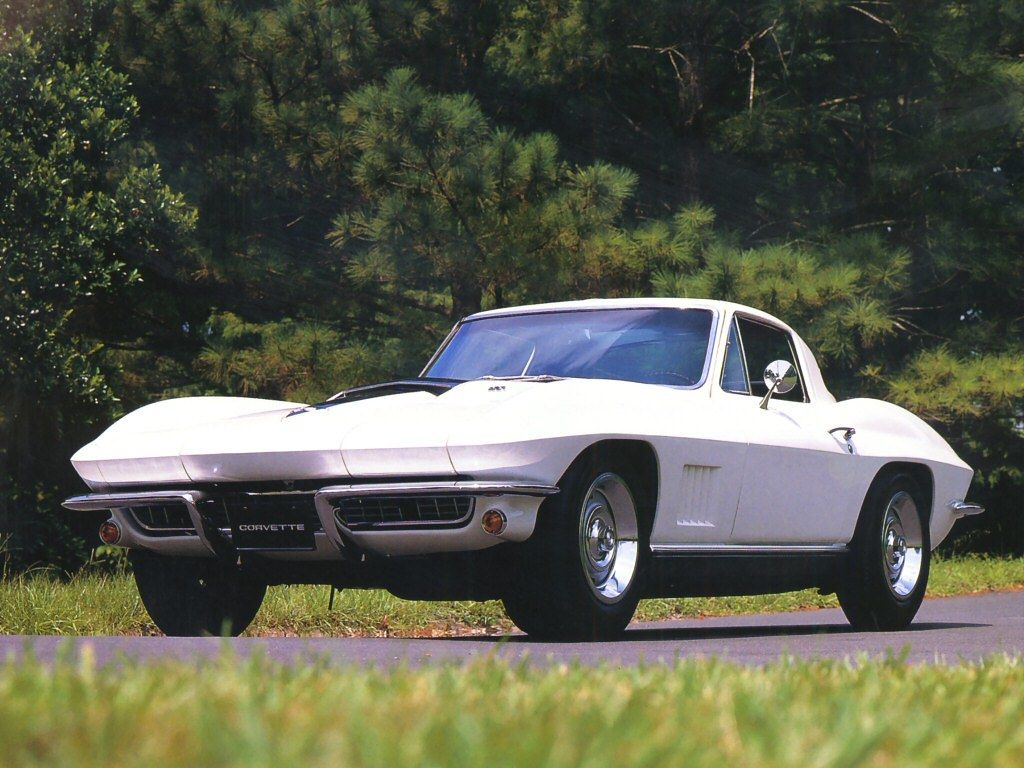
5. **1967 Chevrolet Corvette L88**The 1967 Chevrolet Corvette L88 was perhaps the worst-kept secret in Chevrolet’s illustrious history – a race engine that, through a clever loophole, you could technically order in a street-legal car. This was not a car built for comfort or daily commutes; it was an uncompromised, purpose-built machine designed for one thing: winning races, particularly on the drag strip. Its rarity and singular focus make it a true legend among muscle cars.
Officially, the L88’s formidable 427 cubic inch engine was rated at a modest 430 horsepower, a figure meticulously chosen to keep insurance companies happy and perhaps to downplay its true capabilities. However, anyone in the know understood that the aluminum-head 427 actually produced well over 500 horsepower, a staggering output that few other production cars could genuinely match. This raw, untamed power was its defining characteristic.
This colossal power, combined with the Corvette’s relatively lightweight chassis, enabled the L88 to achieve truly sensational performance metrics. It could push the car through the quarter-mile in the mid-11-second range, a time that even today would make many modern performance vehicles blush. It was a drag strip dominator, designed to leave competitors trailing in its wake with a thunderous roar.
Chevrolet built only 20 examples of the L88 in 1967, underscoring its exclusivity and its role as a factory-backed race special rather than a mass-market offering. Every single one of these cars was “all business,” devoid of non-essential features, stripped down to maximize its performance potential and minimize weight. This uncompromising approach highlighted its pure, unadulterated racing pedigree.
The 1967 Corvette L88 continues to be revered as the ultimate expression of the C2 Corvette’s performance potential. Its scarcity, legendary power, and astonishing drag strip capabilities cement its place as one of the most iconic and potent American muscle cars of the golden age, a testament to Chevrolet’s daring engineering in pursuit of pure speed.
Car Model Information: 2025 Chevrolet Corvette Stingray w/3LT
Name: Chevrolet Corvette
Caption: 2021 Chevrolet Corvette C8
Manufacturer: Chevrolet
Production: 1953–present
ModelYears: bulleted list
Assembly: bulleted list
Class: Sports car
BodyStyle: coupé
Layout: Front-engine, rear-wheel-drive layout,Rear mid-engine, rear-wheel-drive layout
Categories: 1950s cars, 1960s cars, 1970s cars, 1980s cars, 1990s cars
Summary: The Chevrolet Corvette is a line of American two-door, two-seater sports cars manufactured and marketed by General Motors under the Chevrolet marque since 1953. Throughout eight generations, indicated sequentially as C1 to C8, the Corvette is noted for its performance, distinctive styling, lightweight fiberglass or composite bodywork, and competitive pricing. The Corvette has had domestic mass-produced two-seater competitors fielded by American Motors, Ford, and Chrysler; it is the only one continuously produced by a United States auto manufacturer. It serves as Chevrolet’s halo car.
In 1953, GM executives accepted a suggestion by Myron Scott, then the assistant director of the Public Relations department, to name the company’s new sports car after the corvette, a small, maneuverable warship. Initially, a relatively modest, lightweight 6‑cylinder convertible, subsequent introductions of V8 engines, competitive chassis innovations, and rear mid-engined layout have gradually moved the Corvette upmarket into the supercar class. In 1963, the second generation was introduced in coupe and convertible styles. The first three Corvette generations (1953–1982) employed body-on-frame construction, and since the C4 generation, introduced in 1983 as an early 1984 model, Corvettes have used GM’s unibody Y‑body platform. All Corvettes used front mid-engine configuration for seven generations, through 2019, and transitioned to a rear mid-engined layout with the C8 generation.
Initially manufactured in Flint, Michigan, and St. Louis, Missouri, the Corvette has been produced in Bowling Green, Kentucky, since 1981, which is also the location of the National Corvette Museum. The Corvette has become widely known as “America’s Sports Car.” Automotive News wrote that after being featured in the early 1960s television show Route 66, “the Corvette became synonymous with freedom and adventure,” ultimately becoming both “the most successful concept car in history and the most popular sports car in history.”
Get more information about: Chevrolet Corvette
Buying a high-performing used car >>>
Brand: Chevrolet Model: Corvette
Price: $85,990 Mileage: 3,779 mi.
Read more about: America’s Iconic Sports Car: Decoding the Most Problematic Corvette Models in History to Help You Buy Smart
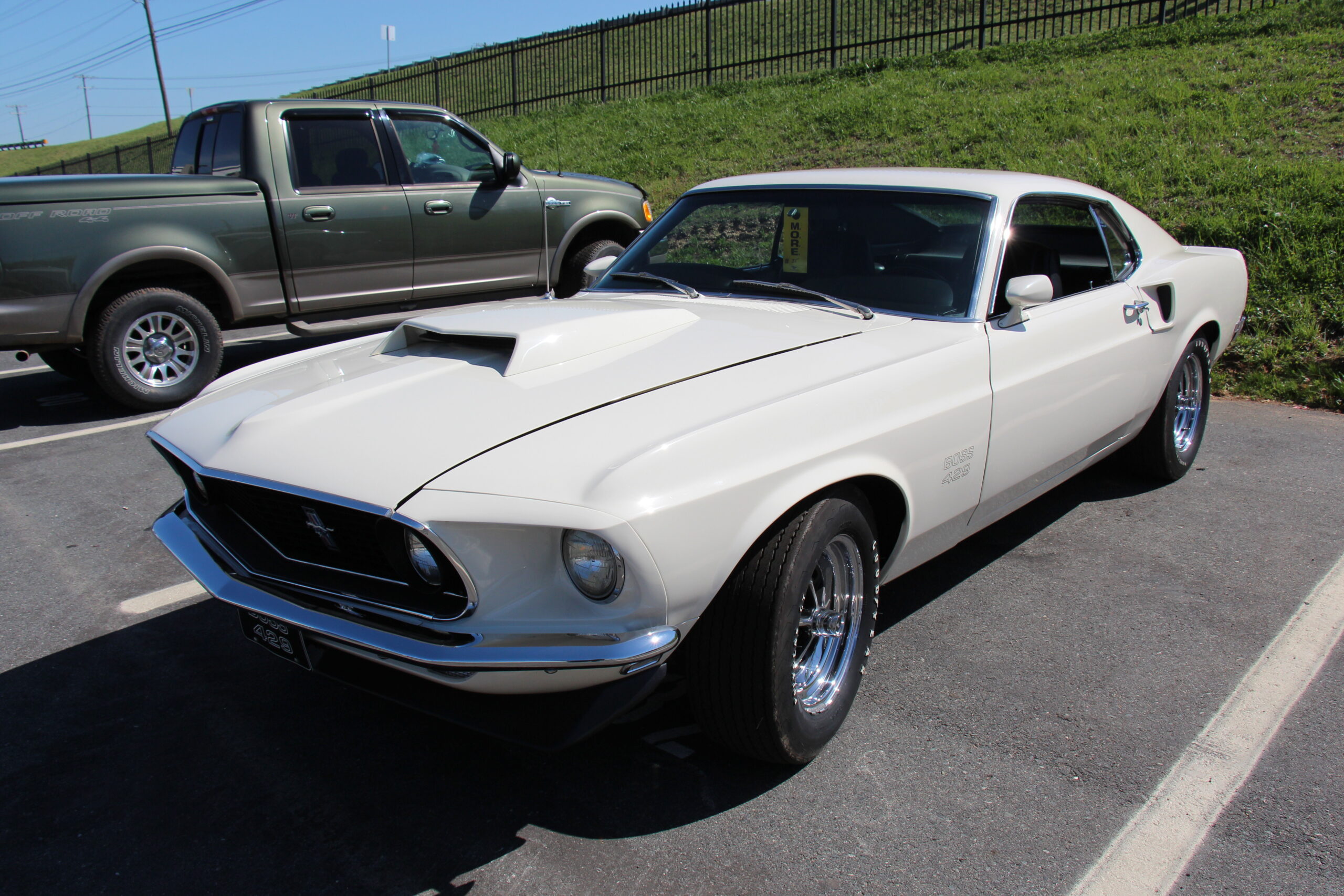
6. **1969 Ford Mustang Boss 429**The 1969 Ford Mustang Boss 429 represents a fascinating chapter in automotive history, born out of necessity to meet NASCAR homologation rules. Ford’s audacious solution was to stuff its immense NASCAR racing engine directly into the compact Mustang, thereby creating one of the most undeniably overpowered pony cars ever to grace the streets and drag strips. This was a Mustang unlike any other, built with a singular focus on raw, unrestrained power.
The engine itself was a colossal 429 cubic inch V8, so massive that its integration into the Mustang chassis required significant engineering modifications. Ford engineers had to undertake the extraordinary task of modifying the shock towers and widening the entire engine bay just to physically accommodate this behemoth. This commitment to fitting such a potent engine underscored the Boss 429’s ultimate purpose as a homologation special and a performance weapon.
With factory drag racing parts and a skilled driver, these Boss 429s were capable of running deep into the 12-second zone in the quarter-mile. This was an astonishing feat for a production car of its era, showcasing the immense potential of its racing-bred engine. What’s more, these cars still had room for further improvement, hinting at even greater performance that could be unlocked with additional tuning and modifications.
The Boss 429 was more than just a muscle car; it was a direct descendant of NASCAR’s most competitive circuits, bringing a taste of professional racing power to the consumer. Its rarity, combined with its unique engineering challenges and incredible performance, quickly established it as a legend among Mustang enthusiasts and muscle car collectors alike. It perfectly embodied the spirit of the horsepower wars, where sheer engine size and output reigned supreme.
Today, the 1969 Ford Mustang Boss 429 remains a highly sought-after and deeply respected classic. It stands as a powerful testament to Ford’s aggressive approach to racing and its willingness to go to extreme lengths to create a street-legal powerhouse, securing its place as an undisputed king of horsepower from the golden age of American muscle.
Car Model Information: 2020 Chevrolet Silverado 1500 LT
Caption: 1969 Boss 429
Layout: Longitudinal engine
Manufacturer: Ford Motor Company
Production: 1969–1970
Name: Mustang Boss 429
Class: Muscle car
BodyStyle: coupé
Assembly: Dearborn, Michigan
Height: 50.4 in
Abbr: on
Length: 187.4 in
Width: 71.7 in
Engine: 429 cuin
Transmission: manual transmission
Weight: 3870 lb
Categories: All Wikipedia articles needing clarification, All articles needing additional references, All articles with unsourced statements, Articles needing additional references from August 2008, Articles with short description
Summary: The Boss 429 Mustang is a high-performance Ford Mustang variant that was offered by Ford in 1969 and 1970. It featured a race-designed 429 cu in (7.0 L) semi-hemispherical head version of the big block 429 V8, offered in the car both to homologate the engine for NASCAR racing and to offer a bigger, more-powerful version of the popular small block 5 L Boss 302 Mustang.
The price of all the performance and modifications was steep: at nearly $5,000 a Boss 429 was roughly twice the price of the base model inline-6 Mustang. A total of 1,359 Boss 429s were produced.
Get more information about: Boss 429 Mustang
Buying a high-performing used car >>>
Brand: Ford Model: Mustang Boss 429
Price: $31,788 Mileage: 36,094 mi.
Read more about: From Street Queens to Garage Dreams: 14 Everyday ’80s Cars Now Prized Collector Favorites

7. **1964 Ford Fairlane Thunderbolt**The 1964 Ford Fairlane Thunderbolt stands as an extraordinary testament to Ford’s aggressive foray into factory-backed drag racing, with a production run of just 100 units solidifying its extreme rarity and purpose-built pedigree. This was not a car designed for casual cruising; it was meticulously crafted for one objective: to utterly dominate the drag strip, embodying the fierce competition of the era.
To achieve its blistering performance, Ford engineers implemented drastic weight-saving measures. The Thunderbolt featured lightweight fiberglass body panels, shedding crucial pounds to maximize its power-to-weight ratio. Furthermore, sound deadening material was conspicuously absent, a clear indication that comfort was secondary to performance. Even its battery was strategically trunk-mounted, optimizing weight distribution for more effective launches.
At the core of this drag strip specialist was the formidable 427 cubic inch Hi-Riser engine, an absolute powerhouse officially rated at approximately 425 horsepower. This engine was a marvel of the era, engineered specifically to deliver brutal straight-line acceleration and immense torque, ensuring the Thunderbolt could unleash its full potential off the line.
The results of this meticulous engineering were truly astonishing. These stripped-down Fairlanes routinely propelled themselves down the quarter-mile in the ferocious 11-second range, a feat that few other cars of its time could consistently match. While they technically wore license plates and were street-legal, their uncompromising design and raw power made it clear they belonged on the track, where their legendary status was forged.
Car Model Information: 2024 Nissan Altima 2.5 SV
Name: Ford Fairlane Thunderbolt
Caption: Ford Fairlane Thunderbolt
Manufacturer: Ford Motor Company
ModelYears: 1964
Class: Muscle car
Assembly: Dearborn, MI
BodyStyle: sedan (automobile)
Layout: FR layout
Related: Mercury Cyclone
Wheelbase: 115.5 in
Abbr: on
Length: 197.5 in
Width: 72.5 in
Transmission: Cruise-O-Matic#MX.2FFX,manual transmission
Engine: {{convert,427,cuin,L,1,abbr=on,Ford FE engine#427
Weight: 3203 lb
Categories: All articles covered by WikiProject Wikify, All articles with bare URLs for citations, Articles covered by WikiProject Wikify from September 2022, Articles needing cleanup from September 2022, Articles with bare URLs for citations from September 2022
Summary: The Ford Fairlane Thunderbolt is a limited production, factory experimental, drag racing version of the Ford Fairlane produced during the 1964 model year only. A total of 100 units were produced; forty-nine 4-speeds and fifty-one automatics. A 4 speed secured the stick CLASS win at the US Nationals and secured the 1964 NHRA Super Stock championship for Ford.
Get more information about: Ford Fairlane Thunderbolt
Buying a high-performing used car >>>
Brand: Ford Model: Fairlane Thunderbolt
Price: $19,695 Mileage: 49,175 mi.
Read more about: Under the Hood: Unmasking 7 Overrated American Cars and Celebrating 7 Overlooked Gems That Deserve Your Attention

8. **1969 Chevrolet Chevelle SS 454**The 1969 Chevrolet Chevelle SS 454, particularly in its revered LS6 version, holds a formidable place in muscle car history, widely regarded as one of the most powerful production cars of its entire decade. It represented a pinnacle of Chevrolet’s big-block engineering, delivering a level of performance that was both awe-inspiring and widely accessible, unlike some of its more niche counterparts.
Under the hood, the LS6 variant packed a monumental 454 cubic inch big-block engine, a true titan that churned out an incredible 450 horsepower. This staggering output firmly positioned the Chevelle SS 454 at the very top tier of the muscle car hierarchy, showcasing Chevrolet’s commitment to delivering raw, unadulterated power directly to the consumer.
What truly set the LS6 Chevelle apart was its remarkable duality. This was not a stripped-down, bare-bones race car; it boasted a full, comfortable interior and all the working amenities one would expect from a production vehicle. Its inherent design allowed for an impressive blend of cross-country touring comfort and uncompromised drag strip prowess, a rare combination for a car of its caliber.
On the quarter-mile, the Chevelle SS 454 delivered on its promise of ferocious speed. Stock examples were consistently capable of running in the low 13-second range, achieving these impressive times without appearing to break a sweat. This capability underscored its refined power delivery and inherent strength, proving it could perform at an elite level while still retaining its street manners.
Car Model Information: 2024 Nissan Altima 2.5 SV
Name: Chevrolet Chevelle
Caption: 1970 Chevrolet Chevelle SS 396 Sport Coupe
Manufacturer: Chevrolet
Production: 1963–1977
ModelYears: 1964–1977
Class: Mid-size
Platform: GM A platform (RWD)
Layout: FR layout
Successor: Chevrolet Malibu
Categories: 1970s cars, All articles needing additional references, All articles that may contain original research, All articles with specifically marked weasel-worded phrases, All articles with unsourced statements
Summary: The Chevrolet Chevelle is a mid-sized automobile that was produced by the Chevrolet division of General Motors (GM) in three generations for the 1964 to 1977 model years. Part of the GM A-body platform, the Chevelle was one of Chevrolet’s most successful nameplates. Body styles included coupes, sedans, convertibles, and station wagons. The “Super Sport” versions were produced through the 1973 model year and Lagunas from 1973 through to 1976.
After a four-year absence, the El Camino was reintroduced as part of the new Chevelle lineup in 1964.
From 1964 to 1969, GM of Canada sold a modified version of the Chevelle that included a Pontiac-style grille, and a LeMans instrument panel, marketed as the Beaumont.
The Malibu was the top-of-the-line model to 1972, and completely replaced the Chevelle nameplate starting with the redesigned, and downsized 1978 model year.
Get more information about: Chevrolet Chevelle
Buying a high-performing used car >>>
Brand: Chevrolet Model: Chevelle SS 454
Price: $19,695 Mileage: 49,175 mi.
Read more about: Unveiling American Automotive Excellence: A Deep Dive into Chevrolet’s 12 Most Legendary Models of All Time

9. **1968 Dodge Dart GTS 440**The 1968 Dodge Dart GTS 440 represents the audacious zenith of Mopar’s beloved philosophy: cramming an impossibly large engine into a deceptively compact and lightweight chassis. This bold engineering approach culminated in a vehicle that redefined expectations for what a small Dodge could achieve, making it a true sleeper legend.
At its formidable heart lay a colossal 440 cubic inch V8 engine, meticulously shoehorned into the relatively diminutive A-body Dart. This integration presented an inherent engineering paradox: while the heavy big-block V8 naturally led to a less-than-ideal weight distribution, the sheer power-to-weight ratio it created guaranteed incredible straight-line speed that compensated for any handling quirks.
The strategic trade-off of weight distribution for unadulterated straight-line fury proved to be a masterstroke on the drag strip. The Dart GTS 440 was a consistent performer, routinely capable of tearing down the quarter-mile in the mid-13-second range, a truly fearsome time for a production car of its size and perceived stature.
Its combination of compact dimensions and earth-shattering power transformed it into an absolute terror in street racing circles. Competitors, lulled into a false sense of security by the unassuming appearance of a compact Dodge, were often caught completely off guard, only realizing the immense “heat” it packed when it was already too late. This element of surprise cemented its legendary status.
Car Model Information: 2020 Chevrolet Silverado 1500 LT
Name: Dodge Dart
Caption: 1966 Dodge Dart GT 2-door hardtop
Manufacturer: Dodge
Production: 1959–1976 (US market)
ModelYears: 1960–1976 (US market)
Class: Full-size
Layout: FR layout
Predecessor: Dodge Coronet#Fourth generation (1957–1959)
Related: Plymouth Valiant,Chrysler Valiant,Dodge Phoenix
Successor: Dodge Aspen,Dodge Diplomat,Talbot Tagora
Categories: 1970s cars, All articles with unsourced statements, Articles with short description, Articles with unsourced statements from December 2023, Articles with unsourced statements from May 2025
Summary: The Dodge Dart is a line of passenger cars produced by Dodge from the 1959 to 1976 model years in North America, with production extended to later years in various other markets.
The production Dodge Dart was introduced as a lower-priced full-size model in 1960 and 1961, but became a mid-size car for one model year for 1962, and was then reduced to a compact for two generations, from 1963 to 1976.
Chrysler had first used ‘Dart’ name plates on two Italian styled show cars, in 1956 and 1957, before it became a Dodge model name. The Dart nameplate was resurrected for a Fiat-derived compact car that was introduced in 2012.
Get more information about: Dodge Dart
Buying a high-performing used car >>>
Brand: Dodge Model: Dart GTS 440
Price: $31,788 Mileage: 36,094 mi.
Read more about: Gone But Not Forgotten: Unearthing the Stories Behind 14 Iconic American Cars That Drove Off into the Sunset

10. **1969 Mercury Cyclone Spoiler II**The 1969 Mercury Cyclone Spoiler II emerged as a distinct aerodynamic warrior, strategically borrowing advanced design and engineering principles from Ford’s highly competitive racing program. This approach allowed Mercury to deliver genuine, race-bred performance directly to the showroom floor, offering consumers a taste of track-level prowess.
The Cyclone Spoiler II’s aggressive styling was not merely cosmetic; its distinctive features were born from the necessity of high-speed aerodynamics, designed to enhance stability and reduce drag at racing speeds. This commitment to functional design created a visually striking vehicle that also backed up its looks with verifiable performance capabilities.
Powering this aerodynamic marvel was the potent 428 Cobra Jet engine. While officially rated at 335 horsepower, this figure was famously conservative, a deliberate tactic employed to help owners avoid the crippling insurance headaches associated with overtly high horsepower ratings. Savvy enthusiasts knew its true output was considerably higher, unleashing formidable power when pushed.
Its performance potential was undeniably impressive: with the addition of slicks and minor tuning, these machines could readily break into the 13-second zone on the quarter-mile. Remarkably, the Cyclone Spoiler II also retained the ability to cruise comfortably on the highway, showcasing a rare blend of track readiness and everyday usability that made it a versatile muscle car icon.
Read more about: Gearhead Dreams: 15 Iconic Defunct Car Brands We Desperately Want Back on the Road
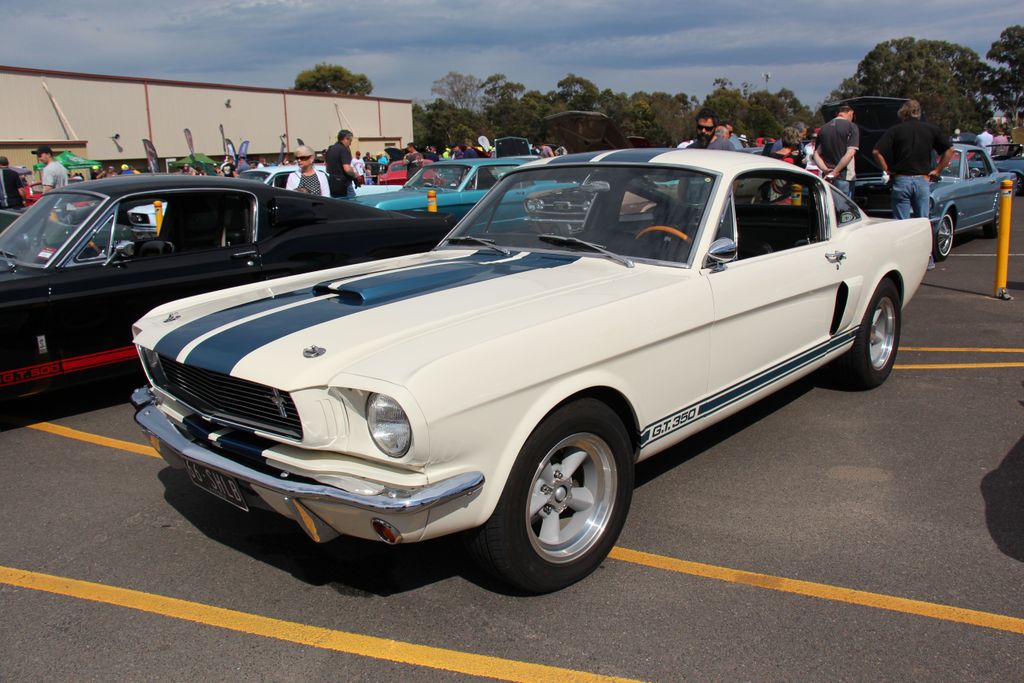
11. **1966 Shelby GT350**The 1966 Shelby GT350, a legendary creation from the workshops of Carroll Shelby, represented a more nuanced approach to muscle car performance. Unlike many of its contemporaries that focused solely on drag strip domination, the GT350 was engineered with a primary emphasis on superior handling dynamics and road course prowess, distinguishing it within the Mustang lineage.
Despite its track-oriented design, the 1966 GT350 possessed a significant straight-line capability. At its heart was a high-winding 289 cubic inch V8 engine, meticulously tuned to produce a spirited 306 horsepower. This powerplant was renowned for its eagerness to rev, delivering its power smoothly and emphatically as the RPM needle climbed, offering an exhilarating auditory and visceral experience.
This potent engine, paired with the car’s lightweight fastback chassis, enabled the GT350 to achieve respectable quarter-mile times, typically in the mid-14-second range. While not designed to be the absolute fastest in a straight line compared to some of the purpose-built drag machines, its balanced performance made it a formidable competitor on any track.
It is crucial to consider this performance within its historical context. While a mid-14-second quarter-mile might not sound earth-shattering by today’s hyper-performance standards, it is a truly remarkable achievement when one considers that many modern V6 economy sedans still struggle to match those numbers. The GT350’s enduring legacy is a testament to its raw, unadulterated capability and Shelby’s masterful engineering.
Read more about: Gear Up for Glory: 15 Unforgettable Rides That Defined the Legendary 1970s Automotive Scene

12. **1969 AMC Hurst SC/Rambler**The 1969 AMC Hurst SC/Rambler stands as one of the most unexpected and truly iconic “giant-killers” of the muscle car era, instantly recognizable by its bold, patriotic red, white, and blue paint scheme. It defied all expectations, proving that an American Motors product, especially one based on a Rambler, could be an absolute terror on the drag strip.
At the core of this compact powerhouse was AMC’s robust 390 cubic inch V8 engine, which, through Hurst’s meticulous enhancements, churned out a potent 315 horsepower. This impressive output was significantly amplified by a critical factor: the SC/Rambler weighed hundreds of pounds less than many of its larger, more conventional muscle car rivals, providing a formidable power-to-weight advantage.
This clever combination of a potent V8 and a lightweight chassis translated into genuinely startling drag strip performance. Hurst SC/Ramblers regularly achieved quarter-mile times in the high 13 to low 14-second range, placing them squarely in contention with much more renowned and ostensibly powerful machines of the period.
Perhaps its greatest weapon was the element of surprise. Competitors, often dismissing the compact Rambler due to its unassuming lineage, were routinely caught completely off guard. By the time they realized the sheer speed and capability of the AMC Hurst SC/Rambler, it was often too late, cementing its reputation as an underdog legend that commanded respect on the asphalt.
Car Model Information: 2024 Nissan Altima 2.5 SV
Name: Rambler American
Caption: Second generation: 1962 convertible
Manufacturer: American Motors Corporation
Production: 1958–1969
Assembly: Kenosha, Wisconsin,Brampton, Ontario,Tehran,Mexico City,Pretoria,Port Melbourne, Victoria
Layout: FR layout
Platform: AMC’s “junior cars”
Predecessor: Nash Rambler,Nash Metropolitan
Successor: AMC Hornet
Class: Compact car
Categories: 1960s cars, AMC vehicles, All articles with unsourced statements, Articles with short description, Articles with unsourced statements from August 2025
Summary: The Rambler American is a compact car produced by American Motors Corporation (AMC) from 1958 until 1969. Representing the second incarnation of the influential compact Rambler lineage that originated with AMC’s forerunner, Nash Motors, in 1950. This version continued to be marketed under the Nash and Hudson marques during the 1954 and 1955 model years following the merger of the two automakers in 1954.
The Rambler American spanned three generations: 1958–1960, 1961–1963, and 1964–1969. Its final model year, 1969, was the last automobile to carry the historic Rambler name in the U.S. and Canadian markets. The Rambler American was also marketed or assembled under license in Australia, Iran, Mexico, Argentina, and South Africa. The Rambler American was available in right-hand drive versions. AMC also shipped CKD units to be assembled in other countries.
The compact Rambler American was among the lowest-priced cars built in the U.S., earning popularity for its low cost of ownership. Numerous victories in the Mobil Economy Run competitions validated this reputation. While initially lauded for its practicality, the American’s image expanded with the optional second-generation AMC V8 engine in late 1966. This transformation made them compact “muscle” models, culminating in the 390 cu in (6.4 L) version developed with Hurst Performance, marketed as the “SC/Rambler”.
The Rambler American platform also served as the foundation for other designs. A youth-oriented concept car, the 1964 Rambler Tarpon, showcased a fastback design that foreshadowed the styling of the 1965 Rambler Marlin. The platform transitioned to sporty pony cars with the 1968 AMC Javelin. It was further reconfigured for its replacement model, the 1970 AMC Hornet. The Rambler American exemplifies AMC’s strategic agility, blending economy, innovation, and performance.
Get more information about: Rambler American
Buying a high-performing used car >>>
Brand: AMC Model: Hurst SC/Rambler
Price: $19,695 Mileage: 49,175 mi.
Read more about: Unearthing the Automotive Ghosts: 14 Forgotten Two-Seater Sports Cars That Demand Your Attention
These 12 classics prove that you didn’t need computers or turbochargers to go fast—just big engines, light bodies, and engineers who weren’t afraid to push boundaries. While modern cars have better technology, traction control, and safety features, there’s something pure about the way these 1960s machines attacked the quarter mile with nothing but horsepower and attitude. Many of these cars, with fresh tires and minor maintenance, could still run times that would embarrass plenty of vehicles in today’s new car showrooms.


